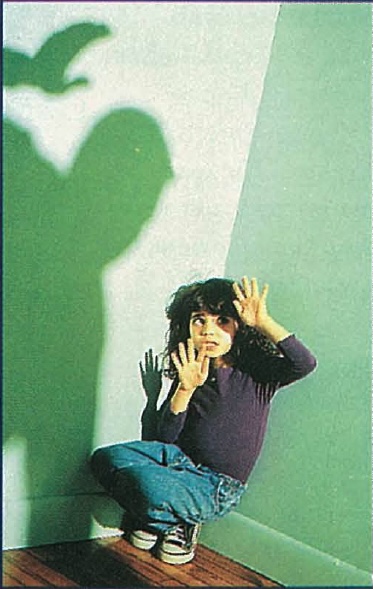By the Editor
Beating children was never much of an issue in the old world. For most of human history, the only question was how to beat, with what and how often. But whether to beat? Most societies didn’t even discuss the option. So parents pummeled their offspring into quivering obedience, into abject submission and even to death. And nobody complained.
But attitudes are changing. Now, in the 90s, child beating–by which we mean something far less severe than child abuse–is illuminated by the same light of conscience that outlawed slavery and championed women’s rights. It is becoming unthinkable and, in some places, criminal to strike your own child.
Our perceptions of and therefore our relations with children are not static. In his book, Peaceful Parenting in a Violent World, Dr. Joseph Cress describes how Western society has swung between authoritarian and permissive approaches to child-rearing, neither of which, he says, really works. “The past several centuries are marked by hypocracy, ambivalence and contradictions in the raising of children. Three facts are clear: 1. child maltreatment has been practiced for centuries; 2. child maltreatment has been historically sanctioned by cultural values and 3. the history of child abuse has contributed to current controversies and practices.”
He notes that every civilization, East and West, has abused children. In European ancient times, he writes, “children weren’t even considered human, but instead were viewed as chattel, owned by the father like sheep or a bullock cart. The accepted notion was that children existed to meet the needs of their parents, and that they were a burden, a financial investment, or born evil and had to be redeemed by severe punishment.” He tells a tale of how brutal beatings, abandonment of children, sale into slavery and toilsome child labor were common up to the 13th century. Then for 300 years attitudes morphed, and more “gentle” disciplines became popular: verbal scolding, caning and chaining to stools for hours at a time. In the 18th century, attitudes reversed again as parents moved away from conquering and intimidating children toward supportive strategies and mental-emotional ways of controlling behavior. Coercion and threats gained popularity, but severe whipping continued. As the 19th century dawned, “an increasing number of adults felt that whipping would create lasting resentment or alienation, and rob children of their dignity and sense of identity.” Nonetheless, strict child-rearing policies continued to dominate. Child-raising became less a process of conquering youngsters and more one of training and guiding them. The emphasis turned to teaching them to conform and socialize.”
America’s pioneers believed children to be essentially wicked. Their appetites and passions had to be harnessed. They had to be “broken like wild horses.” Then about 80 years ago a view emerged that “all work and no play makes Jack a dull boy.” This lead to more time during childhood for recreation and exploration. Discipline was virtually abandoned and apologies were even given to children who were treated harshly. Styles of child-raising see-sawed through the century, first becoming permissive, then authoritarian. When the parental tyranny of the 30s created maladjusted adults, an era of leniency followed in the 50s and 60s, letting children grow up freely. But this resulted in undisciplined and irresponsible brats. Neither system seemed to work, and no one really knew how to compromise between permissiveness and strictness. To this day, America remains ambivalent about whether to be tough or tender in raising children.
More subtle strategies have evolved recently. Parents are taught to take each child’s temperament and age into account, to discipline differently according to their own nature and moods at the time of a child’s infraction, and according to cultural-biological forces facing the child. And definitely, experts urge, don’t strike when angry. When in doubt, hug, don’t hit.
It is a sad fact that Christians are dragging their feet on reform. In the Southern Bible Belt of America it is still regarded as one’s Christian duty and every parent’s inalienable right to physically punish young children. The Abrahamic Bible is legitimately quoted in defense of such a claim (though victims might say that civil laws supercede the religious injunction in such cases). Proverbs 22:15 & 14 says: “Foolishness is bound in the heart of a child; but the rod of correction shall drive it far from him. Thou shalt beat him with the rod, and shalt deliver his soul from hell.” Clearly, Christians who want to physically punish children, and not all do, have a firm theological defense for it. Hindus do not.
Quite the opposite. Hindus don’t believe that children are inherently evil, or that they need to “have the Devil beat out of them.” In Sanatana Dharma each human, however young or old, is a divine, evolving soul, and the prime ethic is this: Thou shalt not injure other living beings. That means neither hitting nor physically punishing kids. We have no spiritual justification. We cannot excuse ourselves by pointing to scriptural authority to assuage our conscience. We cannot say it’s OK “because the Vedas permit it.” They don’t.
It is our belief that Indian spiritual wisdom has much to offer the world today regarding this and other contemporary moral issues, just as we were at the vanguard about slavery and nonviolent civil disobedience. Hindus can, we know, lead the world toward the right balance between tenderness and toughness. Without compromise of discipline, we can set standards of child-rearing for the world to follow. Alas, the world follows example, not sermonizing, so we must begin in the home, of which Hindus have approximately 200 million. This work can only be done there, where children grow up, one home at a time.


